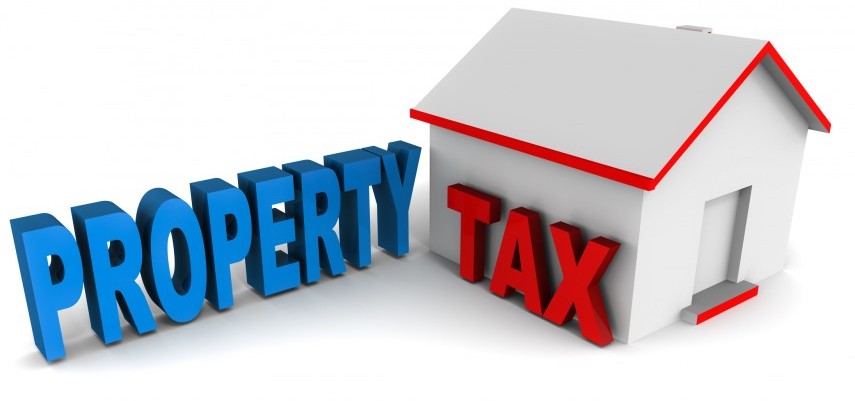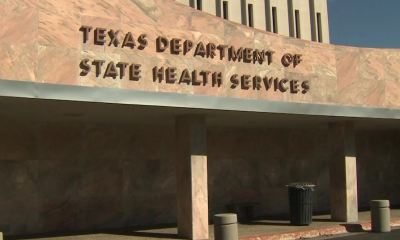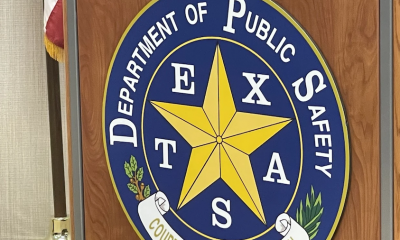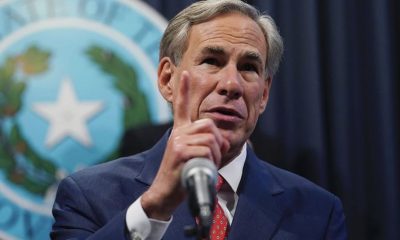U.S. News
Property Tax Reform Didn’t Force Cities to Spend Less … Or Cut Texans’ Tax Bills

PLANO, TX – As Texans continue looking for relief from high property tax burdens, city officials and their taxpayer-funded lobbyists who claimed property tax reform would force them to cut spending on core services like police and fire are being proven wrong.
Despite local officials’ objections to reform during the last legislative session, a number of North Texas cities are getting along fine without busting the new revenue caps set by lawmakers last year.
Statewide property tax reforms in Senate Bill 2, passed in 2019, lowered the annual amount (some) cities can increase tax revenue without voter approval from 8 to 3.5 percent.
While SB 2 was designed to simply limit the growth of local spending and taxes and give citizens more control over their tax bills, some city officials made dire predictions that the bill’s property tax “cuts” would threaten everything from homestead exemptions to bond ratings to city services—often singling out public safety.
Now, cities like McKinney, Frisco, and Plano aren’t even approaching the new voter-approval tax rate their mayors complained would unduly restrict their access to taxpayers’ wallets.
In fact, these cities and others are budgeting for FY 2021 based on the no-new-revenue rate or lower—and will still collect and spend more property tax money than last year.
Cities Still Spending More
Since the no-new-revenue rate calculation excludes taxes on new construction, even at the no-new-revenue rate, cities collect more money each year from new properties added to their tax rolls. That means bigger budgets and more spending, not cuts.
Growth plus higher levies on existing taxpayers has fueled years of skyrocketing property tax collections and spending in many cities—with each annual revenue increase setting a higher baseline for the next year’s tax calculations.
In McKinney, for example, the average homeowner’s city property tax bill went up 48 percent from 2010 to 2020. Even when city officials lowered the tax rate, it wasn’t enough to offset rising property values. Over the same time, the city’s total tax base more than doubled.
McKinney Mayor George Fuller was one of many local officials who testified last year against property tax reform measures. Fuller called letting voters decide on excessive tax hikes “a great soundbite” and said police and fire services would be “compromised and jeopardized” by lowering how much the city could raise taxes without voters’ approval.
Yet this year, McKinney is budgeting based on the no-new-revenue rate for the first time—and at the same time is increasing public safety budgets and adding new police and fire personnel.
Frisco Mayor Jeff Cheney called last year’s reform giving voters a say on excessive property tax hikes “political nonsense” and said he was counting on lawmakers to oppose the legislation, which he claimed would “shift the tax burden from corporations to residents as tools like the homestead exemption and senior exemption would have to be evaluated each year.”
This year, however, Frisco is budgeting based on a tax rate below the no-new-revenue rate—and has maintained its homestead exemptions while also increasing public safety budgets and adding new police and fire positions.
Plano Mayor Harry LaRosiliere testified against the voter-approval limit in last year’s House version of property tax reform and claimed it could negatively impact the city’s bond rating. LaRosiliere signed a coalition letter with Fuller and mayors of 22 other cities aimed at weakening pro-taxpayer provisions in the bill.
This year, Plano is budgeting based on the no-new-revenue rate for the second time in a row since citizens elected more taxpayer-friendly council members—and yet the city has maintained a AAA bond rating and is not cutting public safety personnel.
But Plano’s no-new-revenue rates were also calculated on an elevated baseline. The average Plano homeowner’s city taxes increased 40 percent over the prior five years, while the city’s total tax base grew almost 60 percent.
“There is still plenty of room in the Plano budget to make cuts!” said local resident Debbie Bonenberger. “It is not good enough that we are down to the no-new-revenue rate. Keep going lower.”
Citizens Still Paying High Taxes
Cities collect property taxes to spend on two things: funding the government’s daily operations to provide city services and repaying debt. That spending is what drives property taxes.
Citizens’ property tax burdens are flattened as cities adopt the no-new-revenue rate, but are still at levels driven up by years of compounding increases. Even with reforms, residents’ city property tax bills remain high, and cities still have plenty of money to spend.
Much of city officials’ fear-mongering about reforms causing draconian cuts was coordinated by Texas Municipal League lobbyists, who are paid with taxpayer funds to promote city government priorities that are often anti-taxpayer. (TML’s legislative counsel presented a workshop last year on raising city revenues called “Shaking the Money Tree.”)
Ahead of the 2019 legislative session, TML committed to “vigorously oppose any legislation that would erode municipal authority in any way,” especially laws that would “impose a revenue and/or tax cap of any type, including a reduced rollback rate.”
Despite coordinated opposition, lawmakers succeeded in lowering the voter-approval rate, but some provisions pushed by city officials and lobbyists made their way into the law—including exempting cities with under 30,000 citizens (about 90 percent of Texas cities) and allowing “unused increments” of the 3.5 percent cap to carry over to future tax rates without voter approval.
So, while SB 2 put a check on some city tax burdens, it didn’t lower Texans’ property tax bills—only their local officials can do that.
Where’s the Relief?
With or without property tax reforms, the size of Texans’ property tax bills depends largely on their local officials—who set the rates and spend the money.
To reduce Texans’ property tax bills, local officials must lower tax rates to offset rising property values and control or reduce spending.
Cities will be finalizing their budgets and tax rates in the coming weeks, so citizens still have opportunities to weigh in on local spending plans and advocate for city officials to “keep going lower” with further tax reductions—providing real relief from years of ever-higher tax bills.
Note that cities adopt their budgets and tax rates in the same meeting as the final public hearing, meaning citizens need to contact their council members ahead of those meetings to have their input incorporated into the final proposals.










